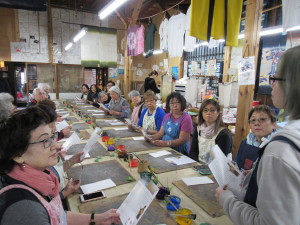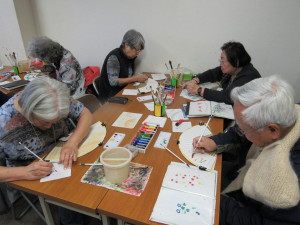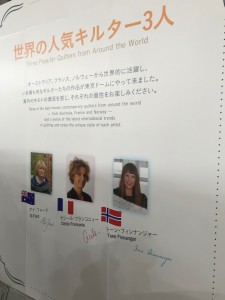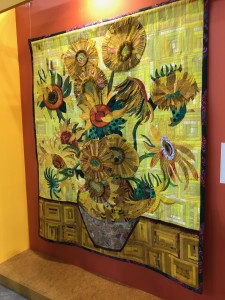Day 1 & 2 Honolulu – Kansai – Kyoto
Traveled to Kansai Airport via Hawaiian Airlines. We met at the main terminal Lobby 4 at the new Hawaiian Airline’s check in counter. Due to the Government shutdown, we got together more than 3 hours prior to our flight to make sure we all get through the TSA checkpoint. We checked in and had some time at the airport so everyone seemed to enjoy shopping at the airport for a while. Our flight time was a little more than 10 hours. We all enjoyed watching movies on the plane. We landed in Kansai on time and we met our guide. We also met with our traveler from California. We finally arrived at Keihan Kyoto Grande a little before 9pm. We all checked in to nice rooms. It was a little late for dinner but our hotel location was right next to a convenience store. Of course we enjoyed Japanese delicacies like musubi and bento.
Day 3 Kyoto
On our first morning in Japan, we always wake up early. I woke up little before 4am but I was full of energy to enjoy our 1stday in Kyoto. We arrived at the breakfast restaurant before it opened and we had a great breakfast buffet. It was a very nice day to start our Kyoto tour. We met our English speaking guide at hotel lobby and started our Kyoto excursion. Our first stop was the Toji Temple for this year’s first Flea Market which is only held once a month. Toji Temple is a World Heritage Site and was only 15 minutes away by bus from our hotel. This temple is very famous for its five-storied pagoda and old, beautiful Buddhist buildings. On the 21stof each month, there is a big and vibrant flea market. Many vendors were there – crafty items, old Japanese fabrics, kimono, bonsai, ceramics, and many food vendors. I visited this temple’s main hall, lecture hall and five-storied pagoda. Inside of those building were so sacred and filled with mercy. It is fun to see the flea market but if you have little time, it is nice to visit the temple itself.















The next stop was at Fushimi Inari Shrine. It is an important Shinto Shrine in southern Kyoto. It is famous for its thousands of vermilion Torii gates, which straddle a network of trails behind its main buildings. The trails lead into the wooded forest of the sacred Mount Inari, which stands rises 764 feet above sea level and belongs to the shrine grounds. Fushimi Inari is the most important of several thousands of shrines dedicated to Inari, the Shinto god of rice. Foxes are thought to be Inari’s messengers, resulting in many fox statues across the shrines grounds. Fushimi Inari Shrine has ancient origins, predating the capital’s move to Kyoto in 794. This shrine became made famous after memoirs of Geisha was filmed.










After Fushimi Inari Shrine, we went to Nishiki Market whichis a narrow and five block long shopping street lined with more than one hundred shops and restaurants. Known as “Kyoto’s Kitchen”, this lively retail market specializes in all things related to food from fresh seafood and produce, knives and cookware. This is a great place to find seasonal foods and Kyoto specialties, such as Japanese sweets, pickles, dried seafood and sushi. We spent our entire lunch time perusing the shops.





After Nishiki Market, we headed to Shanari where you can experience making your own Yatsuhashi sweets. We learned how to make our own traditional Japanese confectionery to take home as a souvenir of Kyoto. Yatsuhashi Kengyo was a musician who lived during the Edo period. He decided to pound the leftover rice until it turned into powder, and he used that powder to make sweets that were later named after him. We mixed rice flour and sugar together then steamed it. Then we mixed the steamed dough with cinnamon and green tea powder. Then shaped it into squares. We put red bean paste, green tea paste and chestnut paste into a piece of dough and shaped it into triangles. The handmade sweets became a great after dinner snack to take back to our hotel. We returned to the hotel then went to Aeon for shopping and dinner.













Day4 Kyoto
After we enjoyed a nice breakfast, we were ready for another Kyoto excursion. We went to Marumasu-Nishimuaya to experience Kyo Yuzen dyeing. Yuzen dyeing is one of the traditional art styles around Japan since 17th century. Hand painting the designs directly onto Kimono (freehand painting) became established in Kyoto. In the end of 19thCentury, a vast range of colorful chemical dyes came into use. Then the method of stencil dyeing was developed. Japanese people have a strong affinity for the beauty of nature and the theme for kimonos are based on what is seen in nature like flowers, birds and landscapes. We were provided a plain handkerchief, stencil pattern and paints. We learned how to color the stencil onto the handkerchief. It wasn’t hard at all!! Painting onto stencil was fun to do. We all enjoyed coloring! We finished our own handkerchief and learned a lot about Yuzen style of dyeing.



















After Yuzen, we headed to Gion Maisendo to painting Japanese fans. We were able to use stencils to design during Yuzen dyeing, so hand painting (free hand) on the fan was a bit hard and challenging. We were able to choose sample drawings from a book but it was difficult. Of course, as craft lovers, we enjoyed painting! Once we painted the fan, we turned them in and they sent the completed fans to us at our Tokyo hotel.














After 2 hands-on experiences, we were ready for lunch! We went to Ganko Sanjo for a kaiseki lunch. It was nice to eat a traditional kaiseki lunch and talk about our Kyoto experiences with everybody!




After we had a nice lunch, we headed to Kyoto Handicraft Center to making our own incense bag (nioi-bukuro). There were 3 different types of incense mixes on our table. We could mix them anyway we wanted to. We learned about the fragrance of the materials and its history. Some materials had a strong and sweet scent. These incense bags can be used in chests, drawers and many other places. The enjoyment of elegant fragrances became a custom of daily life for the aristocracy in the Heian period. They blended a number of ingredients by themselves to create their own original incenses and scented their rooms and garments. We made two bags each to take home. They mentioned that smell of the incense bags will change over time. We had enough time to shop around the center. There were many Japanese books, sweets, kimono, pottery, lacquer ware and many more items to purchase for ourselves and as souvenir. On our way back to hotel, some of us went to Yoshikawa and Yuzawaya – fabric, notions stores. We enjoyed another dinner in Kyoto.
























Day 5 Kyoto – Tokyo
We had to pack our big suitcase so we could send them to Tokyo. We checked out of Kyoto Hotel and headed to Kyoto Station to ride a bullet train (Shinkansen) to Shinagawa, Tokyo. We shopped for our lunch (bento) to take with us and eat them on train. Of course as crafters, we started our own projects on the train. The weather was so nice so we were able to Mt. Fuji from the Shinkansen. It was a short ride to Shinagawa. We arrived in Shinagawa and checked in to our hotel in front of Shinagawa Station. There were many restaurants and shops around our hotel.




Day 6 Tokyo
We had a choice of 4 different breakfast restaurants at our Shinagawa Prince hotel. We tried Hapuna restaurant for the first morning. At 9am, we departed for a day fabric shopping! We arrived at Nippori town. In the 1950s, wholesalers and retailers gathered in Nippori and started a black market to handle any kind of clothes and fabric left behind by the American forces. Since then, this district has hosted throngs of visitors, both domestic and international. Nippori is lined with textile, fabric and accessory stores, as well as second-hand kimono and vintage clothing boutiques. We went to several shops and found many great fabrics. Prices are about 15% to 20% cheaper than regular retail shops. We were all satisfied shopping for fabrics for our next projects!








We moved to Ueno for lunch and shopping. We also enjoyed Yuzawaya which is a store that carry many notions, fabrics and craft goods. We walked around Ameya Yoko-cho area for more shopping.



Last stop was at Shinjuku Okadaya which carries many types of fabrics. But the store was in process of renovating the building so they moved to Studio Alta building temporarily. We visited there and shopped for more fabrics. We had a little extra time so visited other stores and walked around Shinjuku area. We were enjoying great weather but the temperature dropped down starting this night. We went back to hotel after Shinjuku.







Day 7 Tokyo – International Quilt Festival Day 1
The weather was nice again and everyone was ready for new adventures that the day would bring. Today’s highlight event was to go to International Quilt Festival. This quilt show became very popular among Japanese and international visitors over the last 18 years. Roughly 250,000 people come to the show every year and they all check out the exhibited quilts and vendors. The quilt show is one of the biggest quilt shows in the world. We were so happy to be at the show. But there were so many people and vendors we were overwhelmed for the first day. To understand the atmosphere of this festival, you need to go this event at least once in a life time. We spent 5 hours but that wasn’t enough to see everything.






Day 8 Tokyo – International Quilt Festival Day 2
The weather was nice again but it was a cold day. 8 of us went back to Tokyo International Quilt Festival in the morning. And 2 of us went in the afternoon. It was Saturday but little less people were there so we were able to better see and enjoy lots of quilts and vendors. Building on the experience from the 1stday, we knew our way around the event floor. We saw some vendors from Hawaii and enjoyed talking to them. We walked around for about 3 hours and headed to Tokyo station to visit Daimaru Department store. We enjoyed Tokyu Hands store and the food floor. We all took the JR line back to our hotel. It was another great day!



















Day 9 Tokyo – Haneda Airport – Honolulu
We had another great breakfast at the hotel. We all checked out and met with our English speaking guide. Our bus left for Edo-Tokyo Museum on time. This museum was opened in 1993 to look back on the history and culture of Edo-Tokyo. In a unique building modeled on a raised-floor-style storehouse, the exhibition shows 400 years of history and life culture, from the Edo period to the present day, using replicas and variety of authentic items. Our guide fully explained about Edo history.






Then we headed out for our farewell lunch at Tofuya Ukai close to Tokyo Tower. This restaurant features beautiful pine trees and a Koi pond. In the center of Tokyo, we felt like we were back in the Edo period. We had a very nice Japanese set menu. The presentation was beautiful and everything was delicious!















After a nice lunch, we headed to Asakusa where we enjoyed looking around Kuroda-ya, a Japanese paper store. Since it was Sunday and the weather was great, there were many people in Asakusa Sensoji Temple.



After Asakusa, we headed to Kappabashi – which is a shopping street and is lined with several dozen stores selling everything needed by restaurant owners and, of course, us. We found specialized stores for dishes, pans, cooking utensils, stoves, tables, chairs, signs, lanterns and lots more. There were also a few stores which sell plastic food samples used by many restaurants in their show windows. Since it was on Sunday, not too many shops were open but we enjoyed walking around the town.





Around 4:15pm, we headed to Haneda airport. There was no traffic so we arrived at the airport little early. After we checked in, we spread out and enjoyed a last bit shopping and dinner. Our flight was on time and we came home safely. It was a memorable and very unique trip for everyone. Thank you so much for coming to our very first craft and quilt lovers tour with JTB! Hope to see you all soon on other JTB tour!
Posted by Anne Clausen
Please inquire detail for 2019 escorted tours at:
JTB USA Honolulu Office
1450 Ala Moana Blvd., Suite 1370
Honolulu HI 96814
Te:(808) 979-0111
Fax:(808) 979-0100
www.jtbusa.com >> Branch Special >> Honolulu
⇒Search Cheap Airfare to Japan by JTB USA
⇒Japan Rail Pass The Best Way to Travel in Japan
⇒Explore Japan’s top destinations with the help of JTB Sunrise Tours




